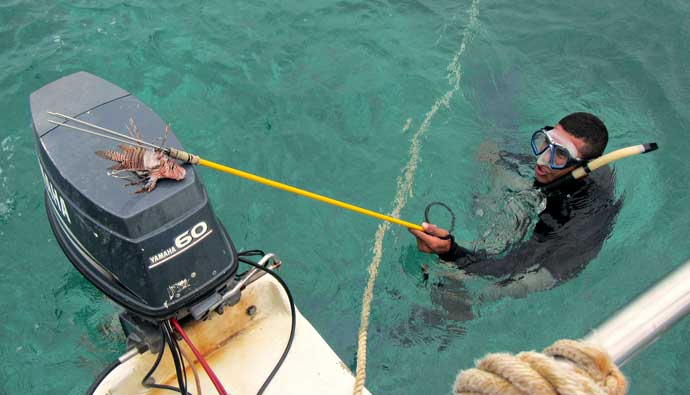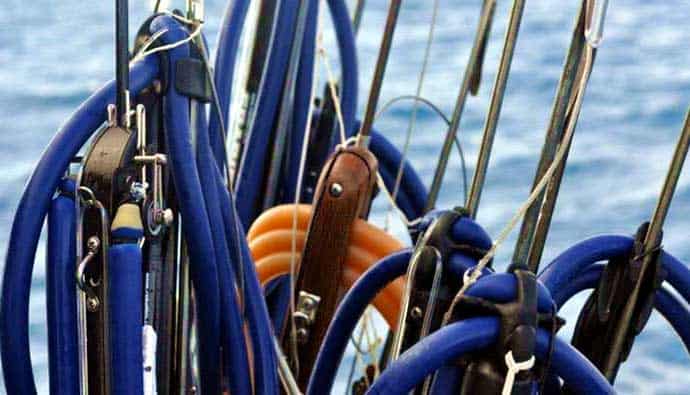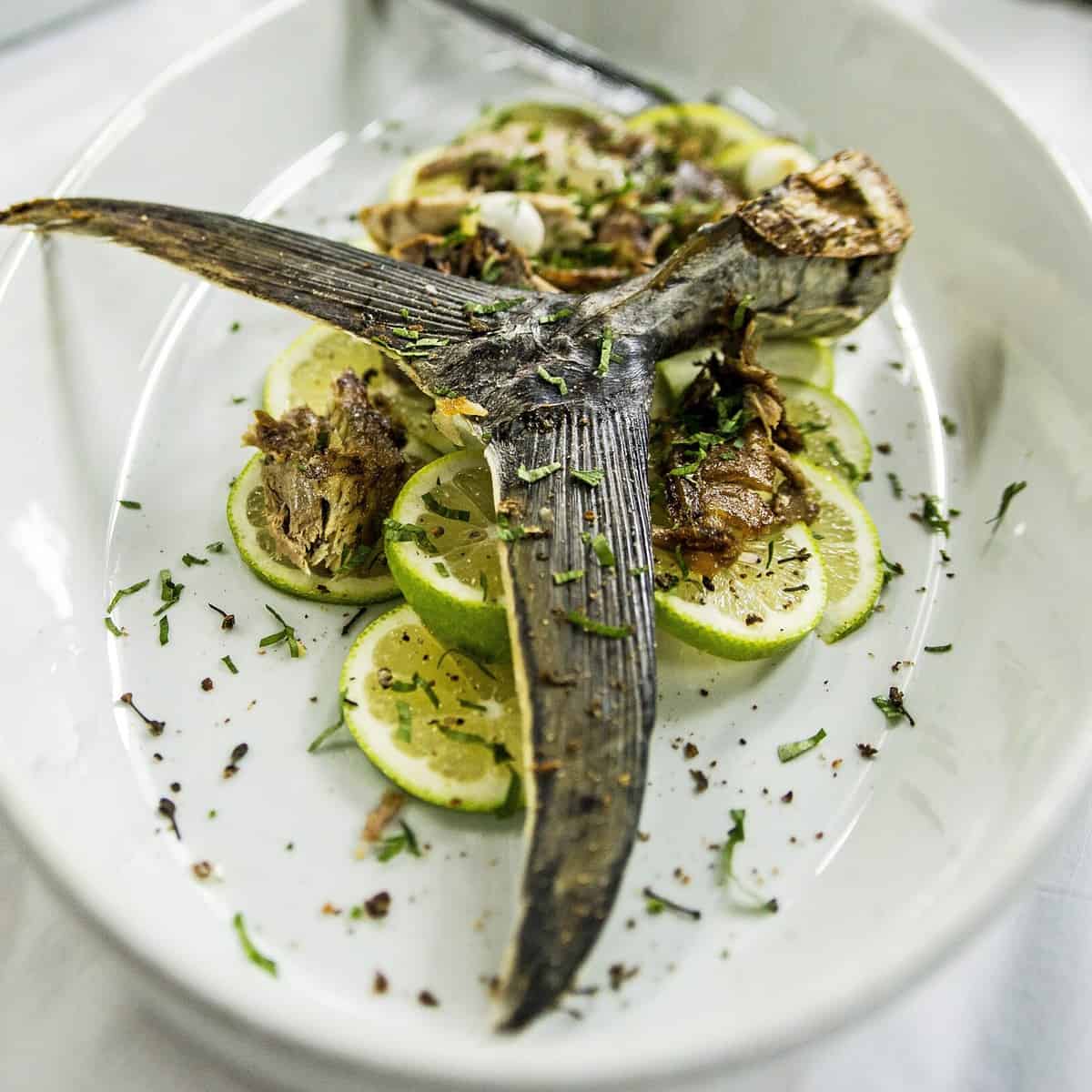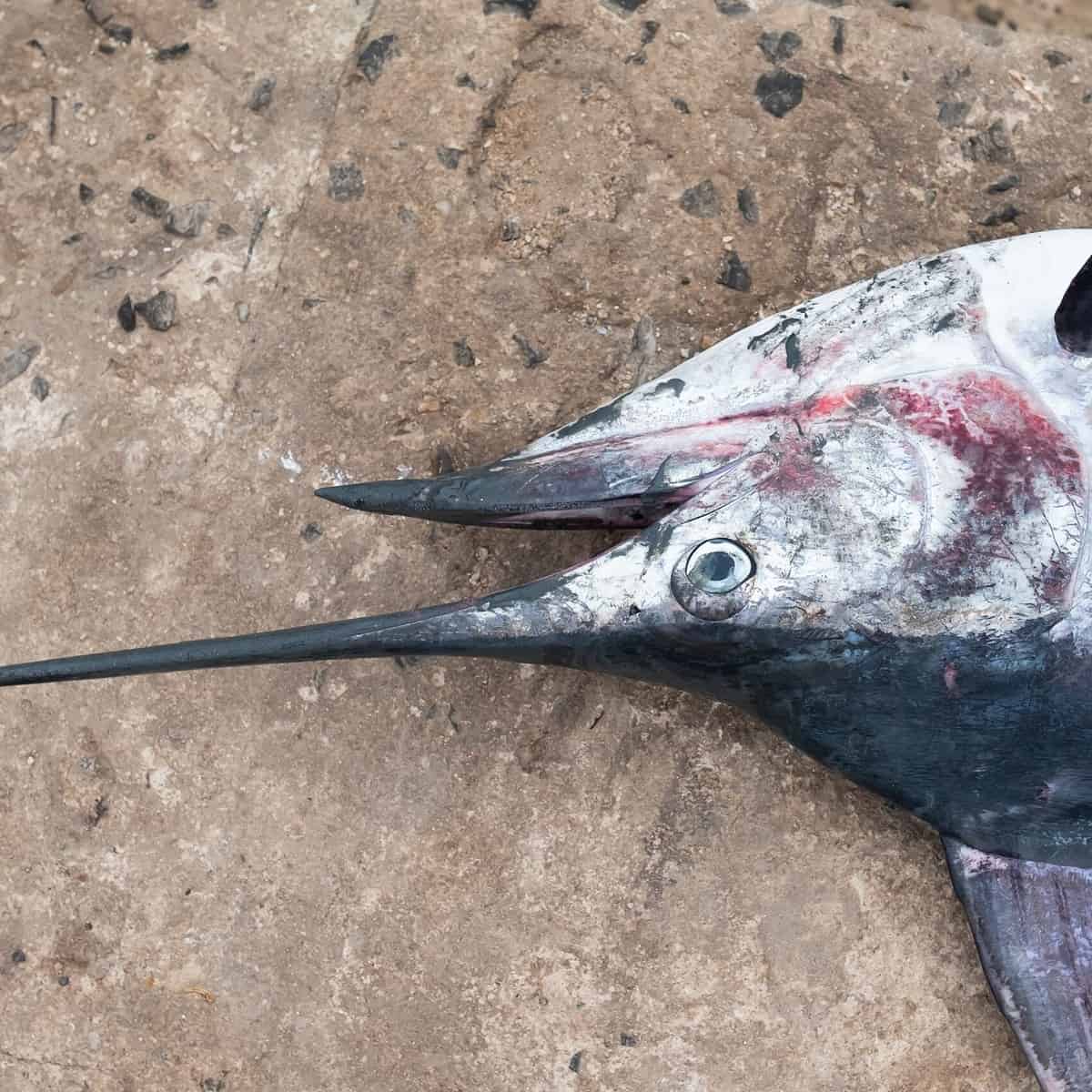Catching wahoo is a challenge. Whether it’s spearfishing or traditional rod and reel.
You need to be physically and mentally prepared for the long days on the boat in rough seas, constantly scanning the water through your binoculars, and fighting with stubborn fish determined not to be caught.
But when you finally land that big one, it’s all worth it. The feeling of triumph is indescribable. So, if you’re up for the challenge, grab your gear and head out into the open ocean in search of these speedy fish. Just be prepared for an adventure of a lifetime.
Listen to more fishing tips on the Cast & Spear Podcast
The History of Catching Wahoo
Wahoo hunting is a popular sport that anglers have enjoyed for centuries. In ancient times, the wahoo was commonly hunted using spears or other primitive weapons, and the thrill of pursuing these fast-moving fish was said to be unparalleled.
“They get out of distance pretty quickly when you see them, and they’re not right in front of you,” Cooper Baker, an experienced wahoo hunter, said.
Today, wahoo hunting is typically done with modern fishing gear and techniques, such as trolling or deep-sea jigging. But no matter what method is used, the excitement of the hunt remains the same.
Wahoo are found in tropical and subtropical waters worldwide, making them a popular sportfishing target. These fish are highly sought-after due to their tasty flesh, which is often compared to tuna or swordfish.
Cooper Baker said, “I think a lot of people would argue that they are the tastiest fish of the sea, and I’d have to agree.” In addition to being delicious, wahoo are also excellent fighters, making them a popular choice for anglers looking for a real challenge.
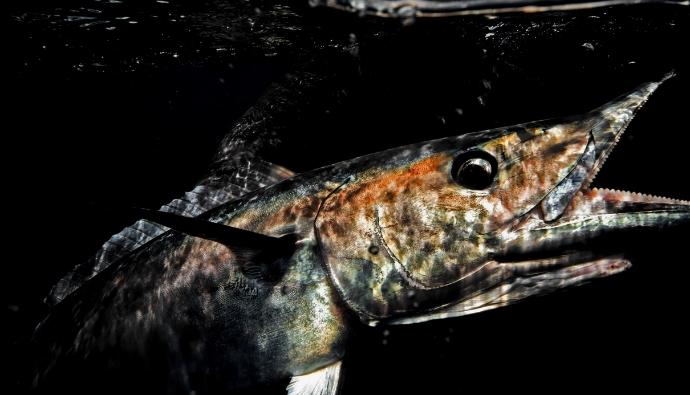
Best Times of Year to Go After Wahoo
You can hunt for wahoo on Florida’s Atlantic coast pretty much year-round from Key West to Amelia. However, the best times to go wahoo hunting are typical during spring and fall, when these fish are most active.
Early in the morning or late in the evening is often a good time to head out on the water, as this is when wahoo tends to feed near the surface.
If you’re looking for the ultimate adventure, consider booking a charter with an experienced guide who can help you find the best fishing spots and offer advice on catching these elusive fish.
“I went with a guide on that trip,” Cooper Baker said.
Challenges of Finding and Tracking These Fast-Moving Fish
Wahoo is one of the fastest fish in the sea, making them a challenge to track and catch. These fish are often found in deep waters, so you’ll need a good quality fish finder or GPS to help you locate them.
Once you’ve found a school of wahoo, you’ll need to be quick and precise with your casts, as these fish are known to be finicky eaters.
And if you’re lucky enough to hook one of these speedy fish, be prepared for a fight, as they are known to put up quite a struggle. But with some skill and a bit of luck, you may end up landing the catch of a lifetime.
So, if you’re looking for a new and exciting fishing adventure, consider hunting wahoo. These challenging fish will provide you with hours of fun and excitement, and you may even end up with a delicious meal at the end of the day.
“So, I think it was different for me, and the meat was, I don’t know how to describe it, but it was the tastiest raw fish that I’ve had,” Cooper Baker said. So, grab your gear and head out into the open ocean, searching for these elusive fish.
Different Techniques for Catching Wahoo
When it comes to hunting wahoo, there are a few different techniques that you can use. They include
Trolling at High Speed
Wahoo are speedy, powerful, and elusive fish, making them a challenge to catch for even the most experienced anglers.
To match their speed, you need to troll at high speeds. Although the speed may depend on the area you’re fishing in.
A good rule is to troll between 12 and 17 knots. But the ideal one for wahoo is 15 knots. If you’re fishing in an area with a lot of debris, it’s best to use a faster speed to avoid getting snagged.
Trolling at Low Speed
You can also troll for wahoo at lower speeds, between 6 and 10 knots. This technique is often used when targeting other pelagic fish, such as marlin, sailfish, and tuna, but it can also be effective for catching wahoo.
When trolling at a lower speed, it’s important to use heavier tackle so that your lure or bait can stay in the strike zone for a longer period.
You may also need to add some weight to your line or rig if you’re fishing in particularly deep waters, as this will help keep your bait or lure near the surface where it’s most likely to be seen by wahoo.
Slow trolling will help save fuel and increase the number of strikes you get, making it a great choice for those who want to catch more fish.
Jig Casting
Jig casting is a great way to target wahoo feeding near the surface. You’ll need to use a light tackle set-up and cast your lure out into the water to do this.
Floating debris is where wahoo will seek shelter, so be sure to cast your lure near any logs, branches, or weed beds.
As your lure sinks, make sure to keep your line as tight as possible so that you can feel it when a fish hits. Wahoo are aggressive feeders and will often strike your bait with a powerful burst of speed.
So be prepared to set the hook quickly and keep the tension on to fight this powerful predator. If you’re successful in landing a wahoo using jig casting, you’ll have bragging rights for years to come!
Chumming
Chumming is a great way to attract wahoo to your boat. This technique involves throwing bait into the water to create a food trail that will lure fish to your location. You can use live bait, frozen bait, or even cut bait when chumming for wahoo.
It’s essential to keep your chum line as long as possible to extend the length of your fishing area. This will help ensure that wahoo feeds in your area and increases your chances of catching one.
Various Types of Gear and Equipment Used for This Sport
Hunting down a wahoo requires specialized gear and equipment, including trolling spoons, flashers, and jigs to catch these fast-moving fish. Other essential pieces of tackle include:
- Heavy-duty fishing line.
- Large circle hooks.
- Strong rods and reels capable of handling the fight.
When choosing the right gear for hunting wahoo, it’s important to consider the type of fishing you’ll be doing. If you’re trolling, you’ll need a high-speed trolling motor and heavy-duty line, quality spoons, flashers, and jigs to attract these fish.
You’ll need a lighter tackle set-up and smaller lures that you can easily cast into the water if you’re casting. And if you’re chumming, your key consideration will be having plenty of bait on hand to create a strong chum trail that can lure in wahoo from a distance.
Wahoo Spearfishing Tips
Blue Water Gun
Using a blue water gun is one of the most popular ways to catch wahoo. This type of gun is specifically designed for use in open water and utilizes a lanyard system that allows you to reload quickly and effectively.
And, of course, wahoo are known for their speed, so having a strong and reliable boat is essential for any hunter looking to target these fish.
Float Line
A floating line is also an important piece of gear for hunting wahoo. This line is designed to keep your bait or lure near the surface, where it’s more likely to be seen by passing fish.
Wahoo are aggressive feeders, so using a floating line can help increase your chances of getting a strike.
Blueline
The blue line is a type of fishing line that is used specifically for trolling. This line is made from high-quality materials and is designed to withstand the forces exerted on it by wahoo as they strike your bait or lure.
Slit Tip
The slit tip is a specialized rod used for fishing in open water. This rod has a high-strength backbone and the flexibility needed to lure wahoo close to the boat, where you can easily catch them.
The slit tip is an essential piece of equipment for any hunter looking to target these fish.
Tips for Improving One’s Success Rate When Hunting a Wahoo
Several tips and tricks can help improve your success rate when hunting wahoo. Some key considerations include:
1. Choosing the right Gear
The right gear is a key factor in hunting wahoo. You’ll need a rod and reel capable of handling the forces exerted by these aggressive fish and specialized lines and lures designed to attract them.
With the right gun, fishing line, and lures, you’ll be well on your way to catching more wahoo in no time.
Cooper Baker said, “You’re just hoping the wahoo comes by, and sometimes it just doesn’t happen.” With the right skills, gear, and techniques, wahoo hunting can be a thrilling and rewarding experience for any angler.
2. Understanding Their Behavior
Wahoo are known for their aggressive feeding habits and lightning-fast speed. You have to understand their behavior before heading out on your hunt.
By knowing when and where they feed, you’ll be able to target them better and increase your chances of landing a trophy-sized wahoo.
3. Trolling vs. Casting
Another important consideration when hunting wahoo is whether to troll or cast for them. Both methods have their advantages and disadvantages.
You should choose the one that best suits your fishing style. If you’re new to wahoo hunting, trolling is often the best option as it’s easier to cover more ground and attract these fish with bait or lures.
4. Trolling at the Right Depth
When trolling for wahoo, it’s important to fish at the right depth. Wahoo often congregates at certain depths to feed, so you’ll need to adjust your trolling speed and depth until you find the right spot where these fish are most likely to strike.
5. Practicing Proper Boat Handling
Because wahoo is known for their speed and aggression, it’s important to have a boat that can handle the rough waters they often inhabit.
You’ll also need to be skilled in boat handling, as you’ll need to quickly adjust your speed and direction if you want to lure these fish to your boat successfully.
6. Always Staying Alert
Wahoo hunting is not for the faint of heart. You’ll need to be constantly on the lookout for these fast and aggressive fish, as they can strike at any moment.
Pay close attention to your line and be ready to set the hook at a moment’s notice if you want to stand a chance of landing one of these prized fish.
Cooper Baker, “You’re just waiting for this fish and sitting in this blue water, just hoping and come by, and your eyes are peeled, and you’re looking like you’re just waiting for something to cross your path.”
7. Patience is Key
Wahoo are a notoriously picky species, and they may not always be in the mood to strike your bait or lure. It might take you long before you land a fish, but with patience and practice, you’ll be able to improve your success rate and land more wahoo in no time.
“Man, just getting out there and being patient, I had three days of no wahoo for me. Some people would go years of doing these hunts without wahoo, but being patient with it. And you’ll finally get that opportunity to land this fish, and it’s worth it.”
Cooper Baker continued, “I feel like just having patience in this whole thing, and you know if you don’t get it one time, it just makes the next time that much better. So just being patient and being up for the ride and the hunt.”
The Unique Thrill of Successfully Reeling One In
There’s nothing quite like the feeling of landing a wahoo. These fish are known for their speed, strength, and aggression, and they put up quite a fight when hooked. The battle is always exciting, but the real thrill comes when you finally reel one of these fish in.
After all the hard work and dedication, there’s no better feeling than successfully holding up your trophy wahoo for all to see.
Cooper Baker, “I ended up getting a shot on one and landing one, and it was one of the most rewarding fish just after days and days of nothing with this fish. It took a while to get to that place where I actually got a shot at one, and it was worth it. That fish was so delicious and there were so many different ways to cook it. It was amazing fish. So, it was quite the experience.”
Final Thoughts
If you’re looking for a thrilling and rewarding fishing experience, then wahoo hunting may be just the thing for you.
These powerful and aggressive fish offer a unique challenge for anglers of all levels, and with the right skills and techniques, you can improve your success rate and land more wahoo in no time.
Whether you’re a seasoned angler or just starting, wahoo hunting is a great way to add excitement and adventure to your fishing trips.
So, what are you waiting for? Head out on your next wahoo hunt today and experience the unique thrill of reeling in one of these prized fish!



 Facebook
Facebook YouTube
YouTube
